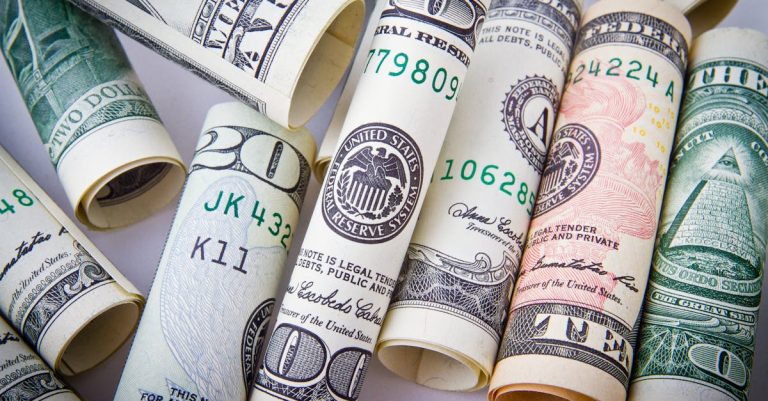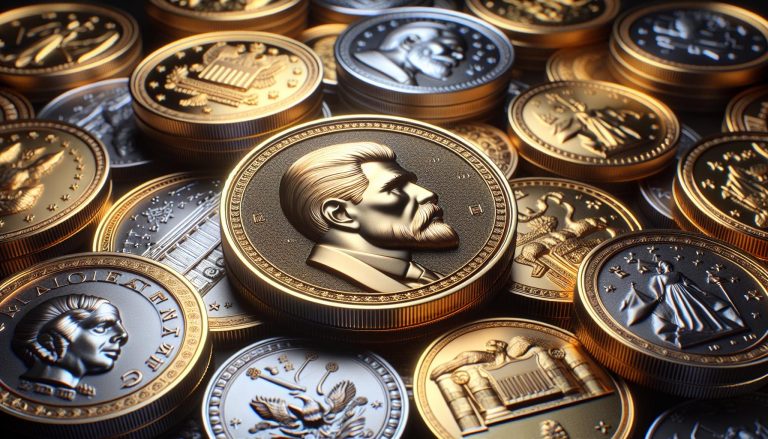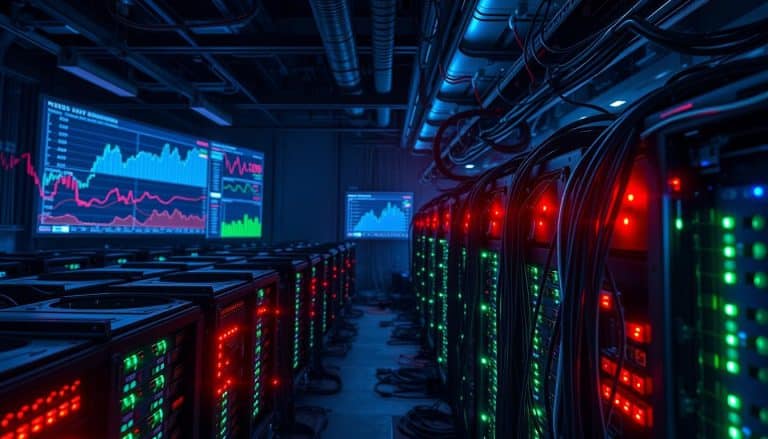Xrp Tokenomics And Price Movement
XRP, the digital asset token of Ripple Labs, has been a prominent player in the cryptocurrency industry since its inception. As one of the most widely-used cryptocurrencies in the world today, XRP has become an important asset for investors to understand and track. Its tokenomics and price movements are part of what makes it so attractive to investors and traders alike. In this article, we will explore these two topics: XRP Tokenomics and Price Movement. We will look at how they interact with each other as well as how they affect investor decisions when considering investing in XRP. By looking into both of these aspects, we can gain insight into how to best navigate the ever-changing cryptocurrency landscape.
Overview of XRP Tokenomics
XRP, a cryptocurrency token created by Ripple Labs, has become one of the largest cryptocurrencies in terms of market capitalization due to its unique tokenomics. A key factor that drives XRP’s success is its utility value, which is derived from its ability to facilitate payments and settlements between different parties. The economic model behind XRP also plays an important role in determining its price movements. This model incorporates various factors such as supply and demand dynamics, inflation rate, and transaction fees to ensure that the token remains in equilibrium with the market forces. By taking these factors into account when designing the tokenomics of XRP, Ripple Labs has been able to create a robust system for pricing the cryptocurrency. As such, it is no wonder why XRP has grown so rapidly in both popularity and value over recent years. To explore further how XRP’s supply and demand affects its price movement, it is necessary to take a closer look at this aspect of token economics.
XRP Supply and Demand
The supply and demand of Ripple’s cryptocurrency is an important factor in its success. The circulating supply of XRP, the token used on Ripple networks, is currently around 45 billion coins with a maximum total supply capped at 100 billion coins. This limited amount helps to create scarcity and value for XRP holders. Furthermore, token velocity can also have an effect on price. Token velocity is a measure of how quickly tokens are trading hands and being moved between wallets. When there is high token velocity, it can indicate that more people are actively using the currency which could lead to increased demand and higher prices. On the other hand, low token velocity indicates that fewer people may be using XRP which could lead to decreased demand and lower prices. Understanding both the current supply and demand dynamics as well as the token velocity can help investors gain insight into why XRP has been able to achieve such impressive growth since its launch in 2012.
As understanding of the underlying forces driving XRP’s success increases, it becomes essential to understand how these factors influence price movements over time in order to make informed investment decisions.
Understanding XRP Price Movement
Analyzing the various external factors impacting the cryptocurrency market can help investors gain a greater understanding of Ripple’s price movements over time. Factors such as market speculation and token utility play an important role in affecting XRP’s price movement. Market speculation is a major driving force behind XRP’s volatility, as investors tend to buy into the token during periods of bullish sentiment and sell off their holdings when they anticipate a bearish market trend. Similarly, token utility is another factor that drives XRP’s price, as more people use it for transactions or investing purposes, its value increases accordingly. Understanding how these two main forces act on XRP prices can help investors make better decisions regarding their investments. With this knowledge in hand, one can then move on to explore what is currently driving the price of XRP today.
What is the Current Price of XRP?
Currently, the value of Ripple is highly dependent on market speculation and token utility. The current price of XRP is subject to a variety of buying and investment strategies which can affect its overall value. The following are important considerations when it comes to evaluating the current price of XRP:
- Market volatility: Factors such as global economic news, government regulations, and other macroeconomic changes can cause rapid fluctuations in the market that affect XRP’s price.
- Supply and demand dynamics: An increase in demand for XRP will cause its price to rise while an increase in supply may have the opposite effect.
- Utility: The more useful a token is perceived to be, the more likely it will be sought after by traders and investors who believe that it has potential future value.
The combination of these factors makes it difficult to accurately predict the future value of XRP; however, understanding their influence on its current price can help guide investors’ decisions about when and how much they should invest in this cryptocurrency. This transition into understanding ‘the future of xrp‘ serves as a reminder that predicting its long-term prospects requires careful analysis beyond just looking at its present prices.
The Future of XRP
Evaluating the potential of XRP requires an understanding of the cryptocurrency’s tokenomics and its future movements in the market. The Ripple Network, which is the underlying blockchain platform that XRP runs on, has seen increased adoption among financial institutions, providing a solid foundation for long-term growth. However, there are still concerns over low liquidity and lack of widespread adoption preventing XRP from reaching its full potential. With plans for continued development of the Ripple Network and increasing usage by financial service providers, it is clear that XRP may have significant upside. To maximize returns, investors should consider how to best capitalize on these opportunities without taking unnecessary risks. In order to do this effectively, they must understand how to invest in XRP and what strategies may be most effective for their situation.
How to Invest in XRP?
The future of XRP remains uncertain with respect to its long-term potential and economic trends. It is, however, possible to consider the various ways investors may capitalize on short-term market speculation of the token in order to make a return. To this end, there are several key steps that one should be aware of when investing in XRP:
1) Understand the broader crypto landscape and how it relates to XRP.
2) Analyse current economic trends and their expected impact on XRP’s price movements.
3) Perform technical analysis of price charts and other indicators to identify potential trading opportunities.
4) Execute trades on a suitable exchange or platform with an appropriate risk management strategy in place.
By following these steps it is possible for investors to take advantage of market speculation surrounding the asset without exposing themselves to undue risk. However, it is important not to forget the associated risks involved in investing in XRP before making any decisions about whether or not it is right for you.
Risks Involved in Investing in XRP
Investing in XRP carries a range of risks, including volatility, liquidity, regulatory risk and counterparty risk. Most of the risks associated with investing in XRP are due to its centralized control. As XRP is not a decentralized cryptocurrency like Bitcoin, it is subject to the decisions of its parent company Ripple Labs. This means that any changes or updates made by Ripple Labs can have an immediate effect on the price and liquidity of XRP tokens. Furthermore, due to its centralized nature, there is no way for investors to pool their own liquidity to increase their returns as they could with other cryptocurrencies. As such, investors must be aware that they may be exposing themselves to higher levels of risk when investing in XRP tokens compared with other digital assets. Additionally, there are also regulatory risks associated with investing in XRP tokens as governments worldwide continue to develop laws and regulations regarding cryptocurrency investments. Finally, investors should also consider counterparty risk before investing in an asset like XRP which is backed by a third-party entity such as Ripple Labs.
Frequently Asked Questions
What are the key differences between XRP and other cryptocurrencies?
Although XRP is not mined like other cryptos, its network is secured with a liquidity pool. This differentiates it from others as it provides improved scalability and transaction speed. Additionally, the lack of mining means less energy consumption making it more eco-friendly than most.
What is the total market capitalization of XRP?
The total market capitalization of Ripple (XRP) is currently estimated to be around $20.4 billion, making it one of the most valuable cryptocurrencies in terms of liquidity providers operating on the Ripple network. It remains highly liquid due to its large userbase and wide acceptance among traders.
What is the impact of regulations on XRP investment?
Regulations concerning XRP investment have legal implications and can lead to trading restrictions, impacting investor confidence and potential profitability.
What is the minimum amount required to invest in XRP?
How much is enough to invest in XRP? With its investment risks and liquidity issues, careful consideration of the amount needs to be taken before entering the market. Even small amounts can bring considerable potential rewards as well as losses. Analyze your goals, resources and risk-tolerance before making an informed decision.
Is XRP traded on major exchanges?
Yes, XRP is traded on major exchanges and contributes significantly to the tokenized economy. Liquidity pooling helps maintain its liquidity while providing a platform for efficient asset trading.





